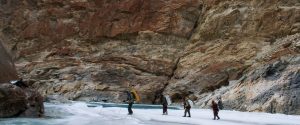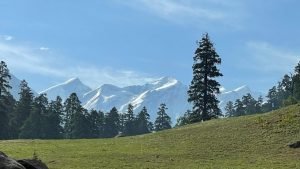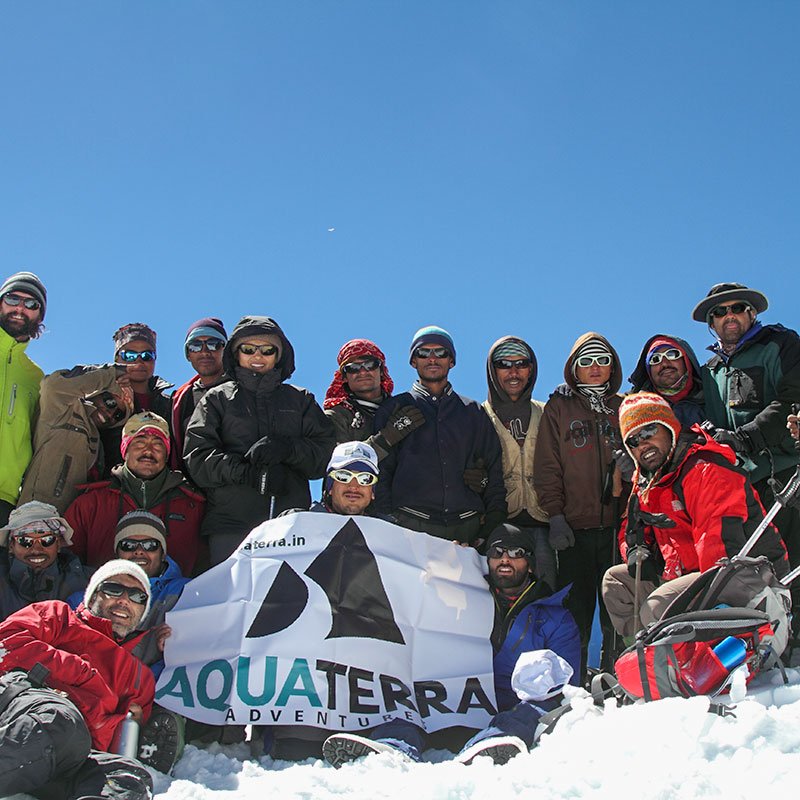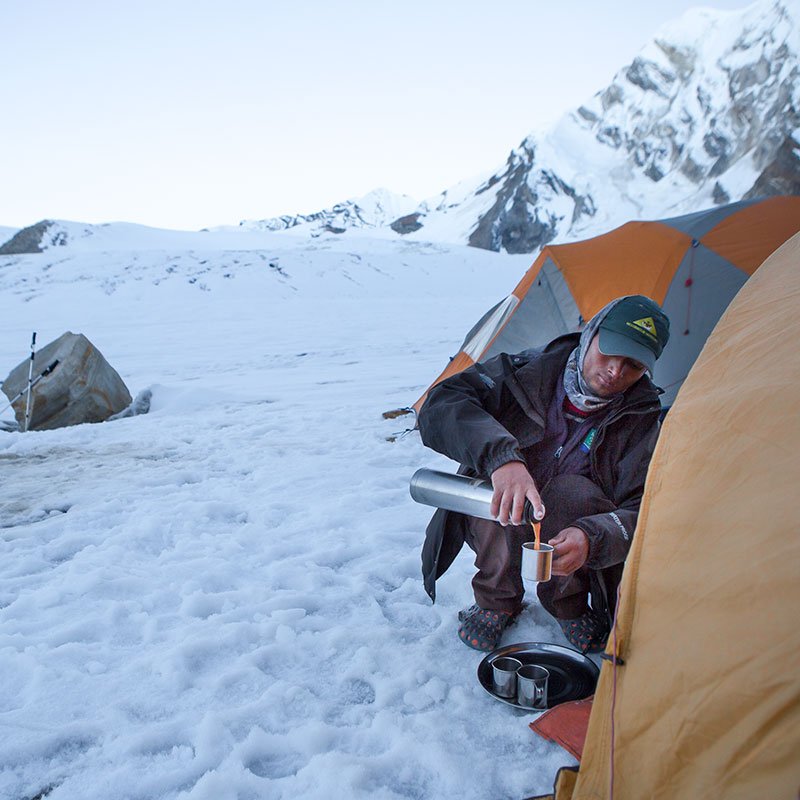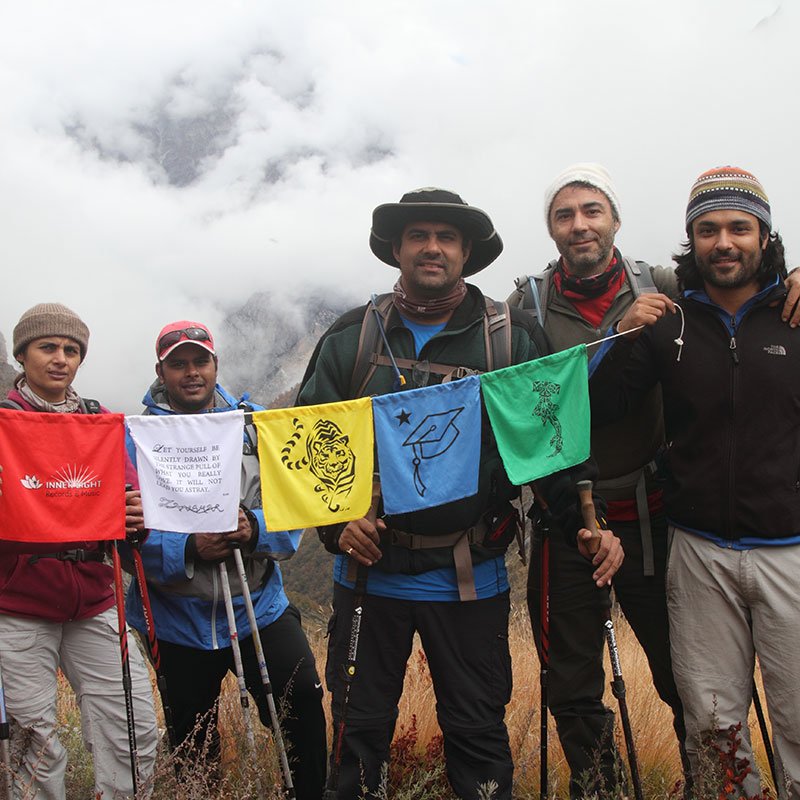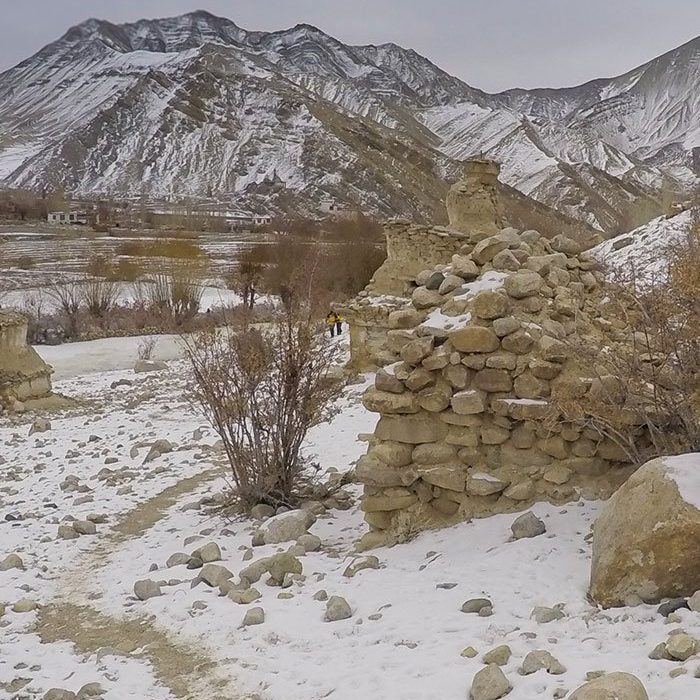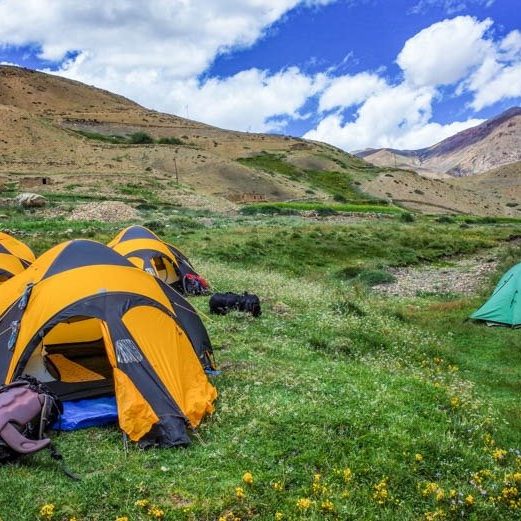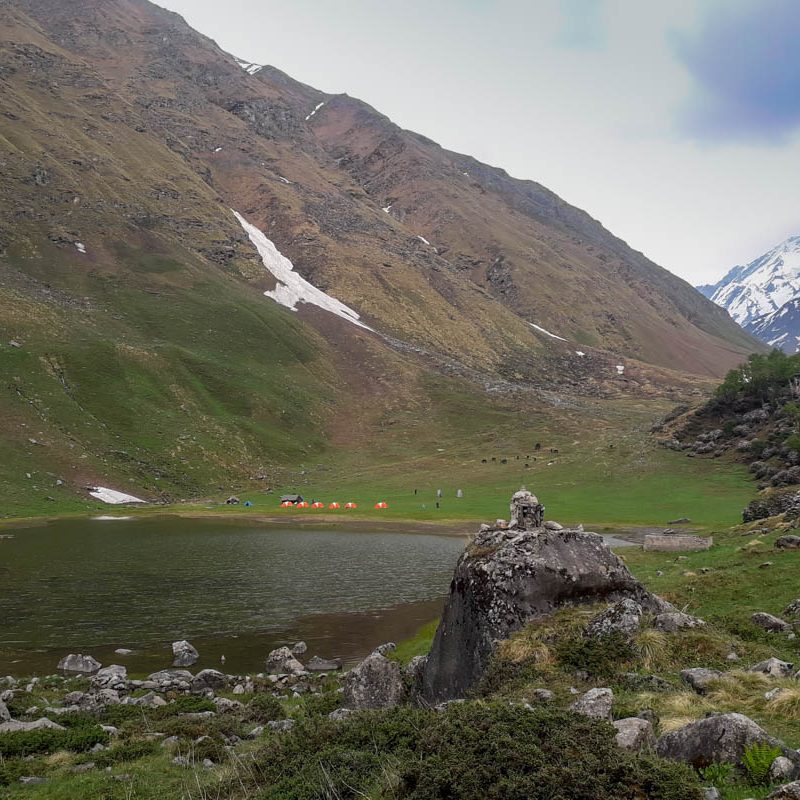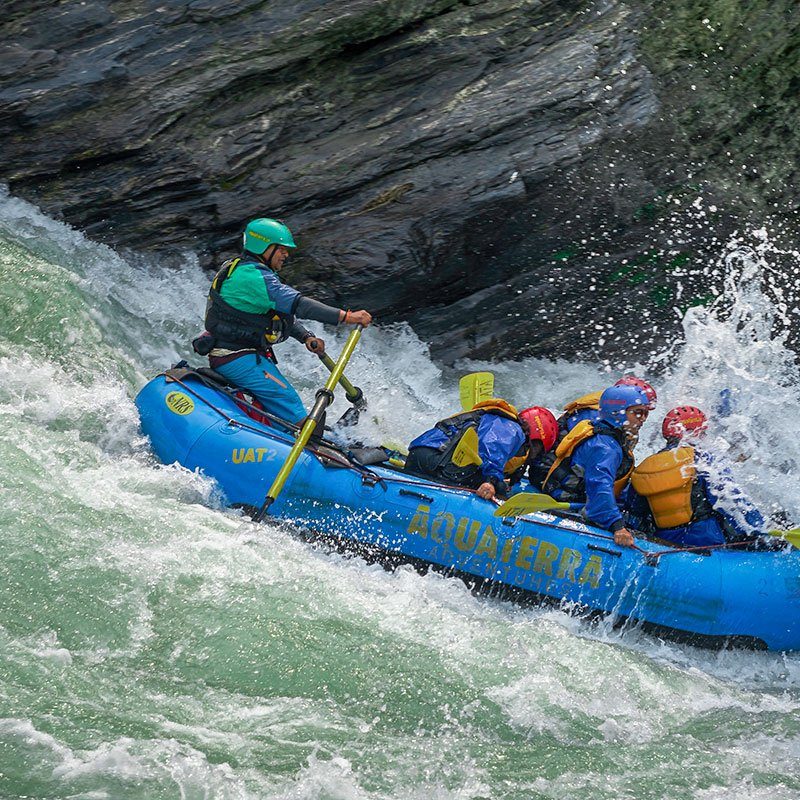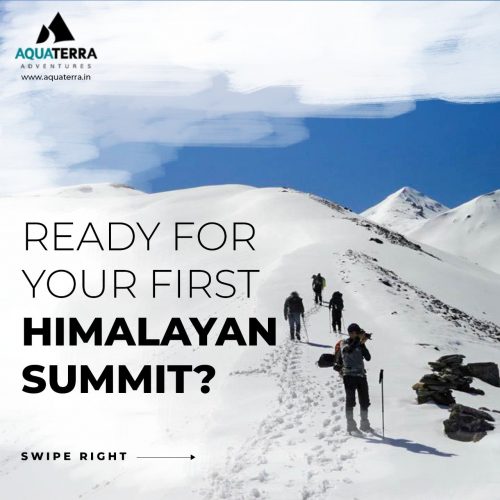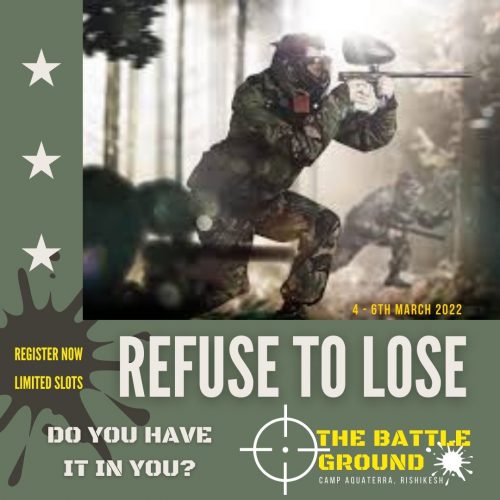What Equipment We Provide
During all treks we provide 4 season trekking tents which are pitched on twin share basis. Treks carry Mess tents, toilet tents and kitchen tents on a regular basis. Mules, horses, donkeys or porters are taken depending on the area of operation and you need carry only their day packs with packed lunch, water, camera and wind/waterproof jackets.
The dining / mess tent has tables and chairs/stools. We also provide sleeping mats. You will need to bring your own sleeping bags, water bottles and personal clothing, however it can be arranged locally on request at extra cost. Water used for cooking is filtered, boiled and treated with iodine to make it extra safe before it is provided to you for consumption through the day. Our trips are not left to sub-agents or trekking sirdars but organised and accompanied by our most seasoned escorts. All regular tours (cultural, festival and special interest tours) are arranged with English speaking local guides, though if required we can also arrange excellent escorts, who are well acquainted with Indian Culture, History, tradition, religion etc. to accompany the group throughout their stay in India.
On multi-day rafting trips, we carry all gear on our rafts in dry bags including client tents, crockery, stoves, sleeping bags and other gear. Toilets on river trips are the great outdoors. A cook accompanies all trips and tents provided with sleeping mats. Food is hygienically prepared and wholesome keeping in mind the nature of trip. At our rafting camps on the Ganga and Tons rivers, however, we have deluxe tents with beds, mattresses and quilts. All day and weekend trips run out of here and it serves as a base for treks in the region as well as day-hikes in the surrounding area.
PUTTING THINGS IN PERSPECTIVE / A NOTE TO OUR GUESTS
In the wilderness, commercial agreements between service provider and client require a depth of understanding that is more than what is routinely attached to similar agreements elsewhere. In the outdoors, we have to balance the pursuit of stated objective and risk. We try to overcome risk and deliver the objective promised in the agreement between client and service provider. But that does not mean that we ignore risk altogether to chase an objective. We wish you to be informed on what makes a trip safe for you and everyone else.
Please take a few minutes to read the following:
The nature of wilderness
By definition wilderness implies remoteness. It means that response to any accident or mishap takes time. Timely intervention is a life saver. Working back from this, it becomes imperative that any commercial adventure in wilderness be conservative in terms of the risk it courts. Yet adventure means there will be risk. The way out is to manage the risk involved in such a fashion that a safe experience is provided. There are a few things that the client can do.
Prepare in advance
Commercial expeditions entail strain even if others are carrying your load and doing the team’s work. Prior physical conditioning – particularly of the cardiovascular sort contributing to improved endurance – helps. Please invest time and effort for that before embarking on the trip. It will help you in the field.
Be honest, speak up
We encourage clients to be honest about how they are feeling on expedition days; voice any personal difficulties they may be experiencing. This helps the team make relevant decisions for clients’ well being, something crucial when venturing into altitude. Not all of us are meant for altitude. If your physiology rebels, there is nothing to be ashamed of it. Speak up. Make sure that your disclosures about self are not biased by an objective you are feverishly trying to achieve like getting to the summit of a peak or crossing a high pass at any cost. Don’t let summit fever and similar instances of extreme personal ambition, consume you. It puts you and your support team at risk. Stay with the team’s assessment of risk. Go with the resultant decisions. If you think you have a point to make by all means do so. We will hear you out. But risk assessment and decisions, will be by the team leaders as the onus of a safe expedition primarily rests with them.
Let the leaders work
You may be familiar with rivers, mountains and altitude. We don’t wish to question that. But there are reasons why many of us choose to go as clients. One of them is that our primary vocation is something else, while those working in the mountains as guides have chosen to make that their primary vocation or at the very least, dedicate time to it. More than us, they are in the mountains. They are alive to it. That’s why we entrust our passage to them. So, please let them work free of interference. Please don’t influence their judgement. Your expedition needs their best work and best judgement. In any expedition, leadership style will vary with the risk being tackled in a given situation. There will be times when we can travel easy in a very consultative fashion. There will be times when that is not advisable and a more directive style may be adopted by your guides. Please comply.

